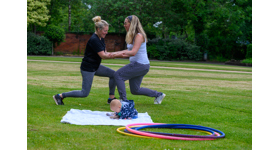Search Results For Data and learning
Data and learning: Gender
We know that women and girls are less likely to be active than men, with women facing a number of practical and emotional barriers preventing them from being as active as they would like to be. It is important to recognise and understand the specific barriers women and girls face, which include fear of judgement and a lack of time, so that we can work to address these barriers when redesigning moving back into daily life. Here you will find the latest research related to the physical activity and sport levels, motivations and barriers related to gender.
9 results found

There are some stark gender inequalities in Greater Manchester. Statistics tell us that men are more active than women. In Greater Manchester, the gap between inactive males (25.5%) and inactive females (27.9%) is 2.4%. There was a slight gap decrease of 0.8% between November 2015-2016 and November 2017-2018. However, there is still much to be done.

In June 2019 Youth Sport Trust released research around their Girls Active Project, the key points, motivators, barriers and considerations around why less girls are active than boys.

Women in Sport research released this year has found that too many girls are dropping out of sport and physical activity during teenage years and developing deep-rooted negative attitudes towards it, which act as barriers throughout life.

An article from Sport England this week alerts us to the fact that busy mums should prioritise their own activity levels.

A detailed breakdown of the latest Active Lives research into the difference in activity levels across genders in Greater Manchester.

We have analysed the latest Active Lives data to get a picture of male activity levels across Greater Manchester